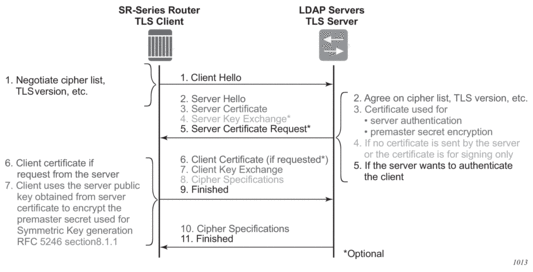Generating Session Keys For Tls
- The key daemon generates keys one hour ahead and each host would opportunistically save the key for the next hour (if there is any) as a decryption-only key. Now even with one or more faster-clock hosts, session resumption by ticket still works without interruption because they can still decrypt session tickets encrypted by any other.
- The keys for this symmetric encryption are generated uniquely for each connection and are based on a shared secret negotiated at the start of the session. The server and client negotiate the details of which encryption algorithm and cryptographic keys to use before the first byte of data is transmitted.
- The Microsoft TLS library that powers Internet Explorer, Edge, and.NET, can be forced to downgrade from TLS 1.2 to 1.0 when presented with a NewSessionTicket. You need to generate session ticket keys randomly, distribute them to the servers without ever touching persistent storage and rotate them frequently. However, I'm not aware of any.
The Transport Layer Security (TLS) Handshake Protocol is responsible for the authentication and key exchange necessary to establish or resume secure sessions. When establishing a secure session, the Handshake Protocol manages the following:
In TLSDHEPSK, the master secret is computed using the pre-shared keys and a fresh DH key that is exchanged between client and server. The TLS handshake protocol consists of 10 handshake messages and the values of p, q and g (or DH key exchange parameters) are include inside the ServerKeyExchange instead of being inside the hello messages.
- Cipher suite negotiation
- Authentication of the server and optionally, the client
- Session key information exchange.
Cipher Suite Negotiation
The client and server make contact and choose the cipher suite that will be used throughout their message exchange.
Authentication

In TLS, a server proves its identity to the client. The client might also need to prove its identity to the server. PKI, the use of public/private key pairs, is the basis of this authentication. The exact method used for authentication is determined by the cipher suite negotiated.
Generating Session Keys For Tls 1
Key Exchange
Tls Session Renegotiation Vulnerability
The client and server exchange random numbers and a special number called the Pre-Master Secret. These numbers are combined with additional data permitting client and server to create their shared secret, called the Master Secret. The Master Secret is used by client and server to generate the write MAC secret, which is the session key used for hashing, and the write key, which is the session key used for encryption.
Establishing a Secure Session by Using TLS
Generating Session Keys For Tls 2017
The TLS Handshake Protocol involves the following steps:
- The client sends a 'Client hello' message to the server, along with the client's random value and supported cipher suites.
- The server responds by sending a 'Server hello' message to the client, along with the server's random value.
- The server sends its certificate to the client for authentication and may request a certificate from the client. The server sends the 'Server hello done' message.
- If the server has requested a certificate from the client, the client sends it.
- The client creates a random Pre-Master Secret and encrypts it with the public key from the server's certificate, sending the encrypted Pre-Master Secret to the server.
- The server receives the Pre-Master Secret. The server and client each generate the Master Secret and session keys based on the Pre-Master Secret.
- The client sends 'Change cipher spec' notification to server to indicate that the client will start using the new session keys for hashing and encrypting messages. Client also sends 'Client finished' message.
- Server receives 'Change cipher spec' and switches its record layer security state to symmetric encryption using the session keys. Server sends 'Server finished' message to the client.
- Client and server can now exchange application data over the secured channel they have established. All messages sent from client to server and from server to client are encrypted using session key.
Resuming a Secure Session by Using TLS
Generating Session Keys For Tls Free
The client sends a 'Client hello' message using the Session ID of the session to be resumed.
The server checks its session cache for a matching Session ID. If a match is found, and the server is able to resume the session, it sends a 'Server hello' message with the Session ID.
Note
If a session ID match is not found, the server generates a new session ID and the TLS client and server perform a full handshake.
Client and server must exchange 'Change cipher spec' messages and send 'Client finished' and 'Server finished' messages.
Client and server can now resume application data exchange over the secure channel.